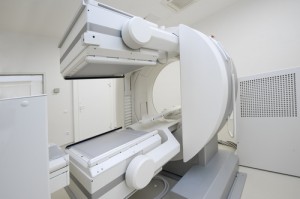 A new technique involving holding one’s breath while being administrated radiation therapy is being taught to breast cancer patients in order to reduce the long-term risks of radiation to the heart. The ‘‘deep inspiration breath holding’’ technique, according to an article on The Age by Kate Hagan, is being tested on about ten patients, mainly suffering from left-sided breast cancer, at the Epworth Hospital, in Australia.
A new technique involving holding one’s breath while being administrated radiation therapy is being taught to breast cancer patients in order to reduce the long-term risks of radiation to the heart. The ‘‘deep inspiration breath holding’’ technique, according to an article on The Age by Kate Hagan, is being tested on about ten patients, mainly suffering from left-sided breast cancer, at the Epworth Hospital, in Australia.
According to radiation oncologist Andrew See from Epworth Hospital, although radiation is effective for the treatment of breast cancer, it carries a small long-term risk of cardiac complications. Holding the breath during the therapy may reduce this risk, which includes heart attacks, by reducing the amount of radiation that reaches the heart and lung.
‘‘The heart is slightly inclined to the left-hand side so the major chamber and coronary vessels can come close to the radiation field,’’ explained See. ‘‘Rates of heart injury were very high in the 1970s and 80s because the treatments were quite crude and beams used to shoot through the entire cardiac silhouette. With modern treatments the heart dose is quite low but it’s not zero. With this new technique, we can bridge that gap and reduce the low dose to almost a zero dose.’’
The radiation is released only when patients hold their breath, meaning that the chest is more expanded and the heart is more distant. Patients are able to monitor their breathing with goggles or a television screen, and the doses are delivered only for about 20 to 30 seconds, while patients are holding their breaths.
A clinical trial is currently being planned at multiple hospitals around Australia, which will include the Epworth Hospital, who introduced the technique in May. The trial aims to assess the results of the technique, comparing cardiac complications in women who were submitted to radiation and ‘deep inspiration breath holding’ and women who did not use the technique.
Although it has already been used in other countries, it is the first time that the technique is being done in Australia, according to the oncologist, who explained that women undergoing radiation for left-sided breast cancer have a one to two percent increased risk of cardiac complications in five years, and in some groups, such as women with diabetes, the risk can be even higher.
[adrotate group=”1″]


